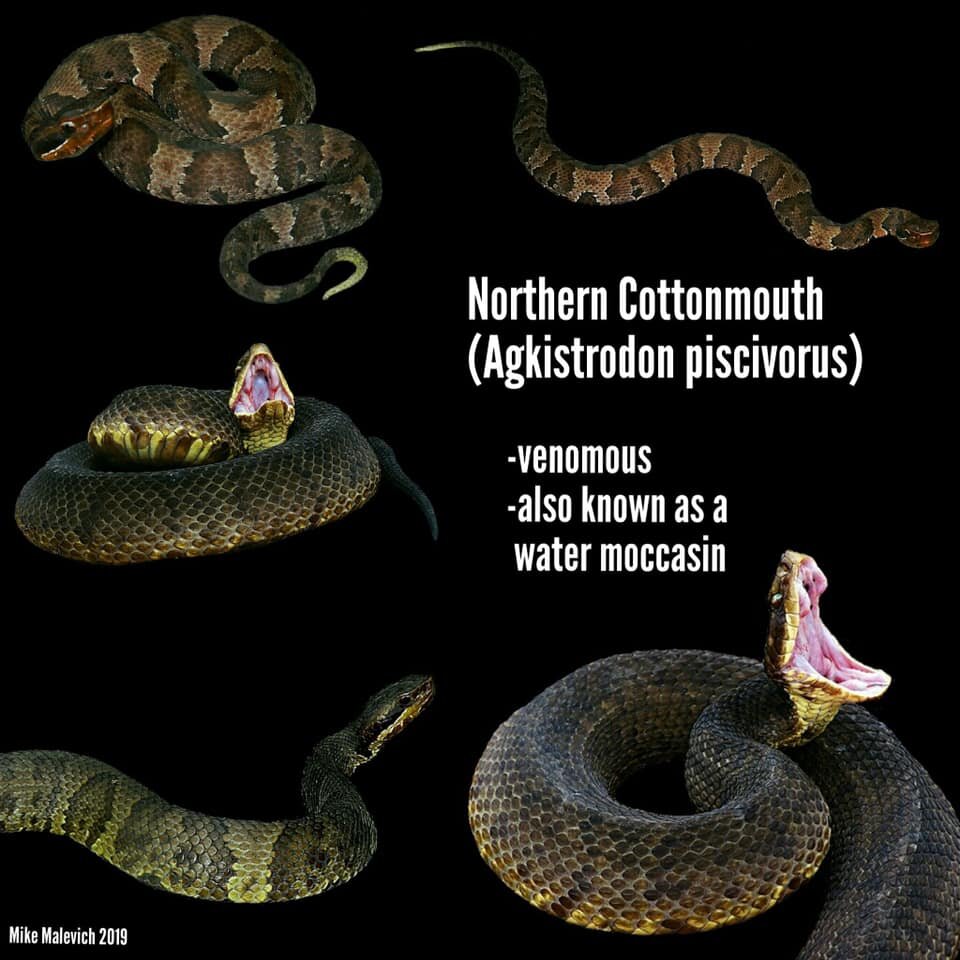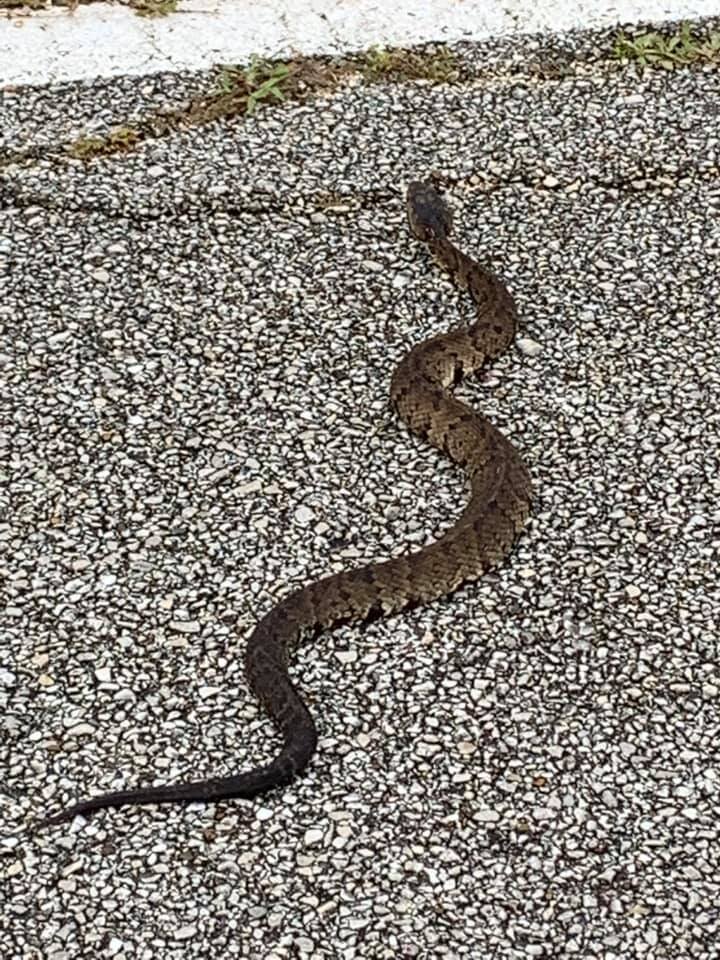Cottonmouths
Written by Tim Pylate, Armand Bayou Nature Center Executive Director
Cottonmouth Snakes | Photo by Mike Malevich
Cottonmouths, also known as water moccasins (agkistrodon piscivorus), are probably the most common mistaken identity of so many harmless water snakes in yards and neighborhoods across the southeastern United States. In addition, there are many myths surrounding the cottonmouth, and he has an undeserved bad rap. By the end of my little series, I hope that readers can tell the difference between this guy, who is best admired from a distance, and other common Texas snakes.
Water moccasins have a very distinctive SET of characteristics that can help us to identify them. Remember, snakes are best identified by looking at several characteristics.
SHAPE
Water moccasins have a heart-shaped head to accommodate their venom glands. They also have a brow scale above their eye that makes them
look sinister or angry. They have a skinny neck and a very short fat body (not a long slender body). Their fat body quickly tapers into a short stubby tail, instead of a long tapered one. (BUT, remember that other snakes can flatten their heads when hiding or angry, giving them a heart-shaped look.) Moccasins are pit vipers, so they have a heat seeking “pit” between their nostrils and their very catlike eyes.
Cottonmouth Snake | Photo by Tim Pylate
COLOR
The unmistakeable and distinctive coloration on a water moccasin is the “Zorro” mask across their eyes. They also do NOT have labial bars or
stripes on their chins. IMPORTANT: If you see bars on snake’s lip it is nonvenomous and harmless! Cottonmouths often have a “pixelated” pattern when they are young, but as they grow older, they can become dark brown, almost black color. All of the snakes pictured here are cottonmouths.
BEHAVIOR
Contrary to popular myth, cottonmouths do not chase people. They are not aggressive in that way, and people are not a food source for them. Most of the “chase” stories can be attributed to water moccasins attempting to jump onto a boat or canoe in order to sun or rest. Cottonmouths can be fierce in standing their ground when threatened and will often open their cottony white mouth to show off their retractable fangs, which deliver a hemotoxic venom to their prey. This also contributes to the “chase” stories, giving the moccasin a bad reputation.
Remember, there is no need to kill a snake, even if it’s a venomous one. A squirt from a water hose will move them along. Most people get bitten while trying to kill or handle a snake.


